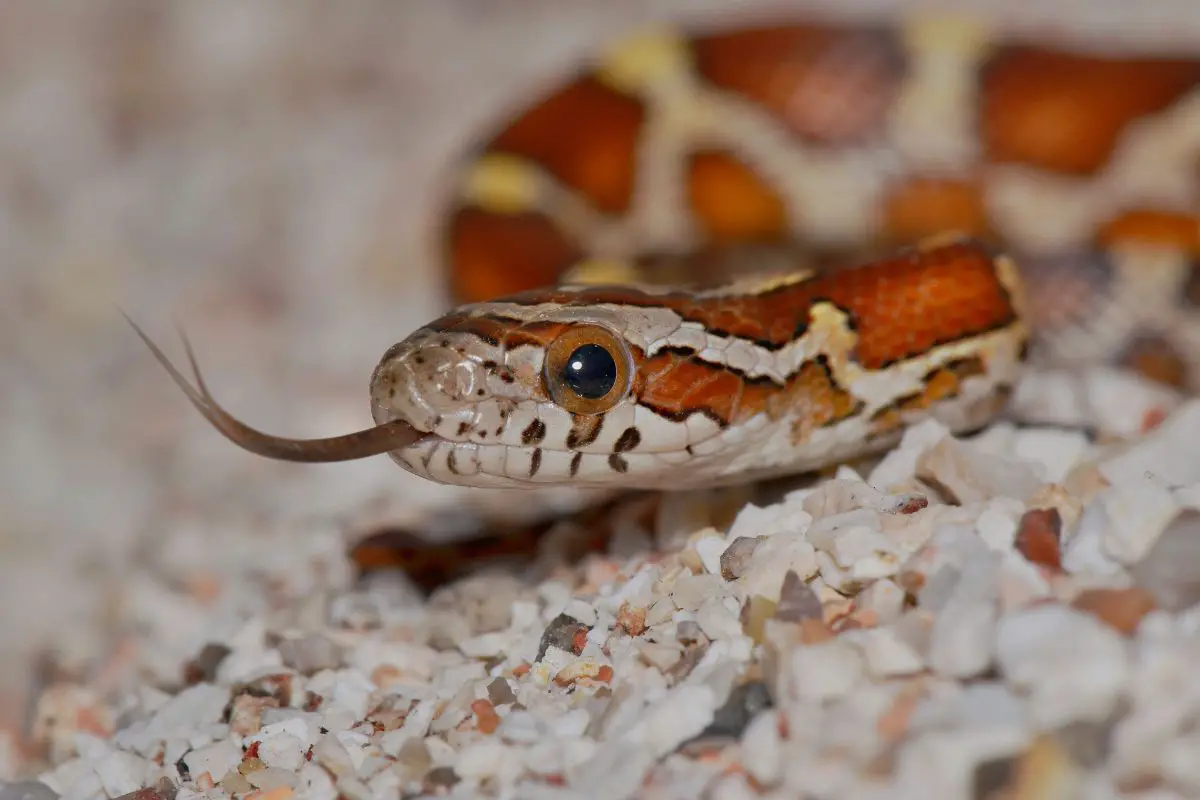You can find toads on every continent globally, except Antarctica. In North America, there are 16 species of toads in Texas. Most of them are in the Family Bufonidaee, known as true toads. The others are in the Family Microhylidae, Rhinophrynidae, or Scaphiopodidae.
Generally, toads live in open landscapes, humid conditions, or suburban locations. They also breed near bodies of water, making Texas’ ecosystems ideal. Texas borders the Gulf of Mexico and contains numerous major rivers, such as the Rio Grande, Colorado River, and Red River.
Although both toads and frogs are part of the Anura order, they are very different in their skin type, sounds, and warts. Toads can also survive out of water longer, so you can often find toads further away from water bodies. This article will provide you with information on the 16 types of toads in Texas.
Let’s hop in!
Toads in Texas
The 16 different species of toads in Texas are the Texas toad, East Texas toad, Houston toad, American toad, Green toad, Gulf Coast toad, Great Plains toad, Cane toad, Red-Spotted toad, Woodhouse’s toad, Eastern Narrow-Mouthed toad, Mexican Burrowing toad, Great Plains Narrow-Mouthed toad, Couch’s Spadefoot toad, Eastern Spadefoot toad, and New Mexico Spadefoot toad.
1. Texas Toad
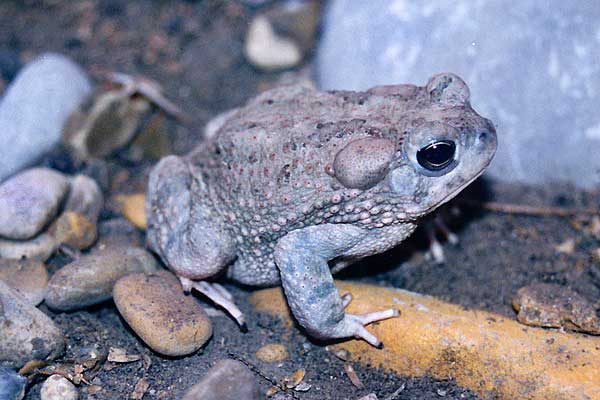
Scientific name: Anaxyrus speciosus
The Texas toad is brown in color and has dark yellow-green spots. Adult males grow up to 3.1 inches and females up to 3.6 inches. You can find these toads throughout Texas, except for the wetter areas of east Texas and the western panhandle. They often burrow into loose soil in grasslands or sandy soils.
2. Woodhouse’s Toad

Scientific name: Anaxyrus woodhousii
The Woodhouse’s toad is grayish-brown or yellowish-brown with small dark spots. However, their bellies are paler and usually without spots. They can grow up to 5 inches in length and have long and large parotoid glands. They live across the state, except in the far eastern and western half of south Texas.
3. East Texas Toad

Scientific name: Anaxyrus woodhousii velatus
The East Texas toad is either a subspecies of the Woodhouse’s toad, Fowler’s toad, or a combination of the two. They average at a length of 2 to 3 inches. These toads are yellowish-brown, black, or greenish-brown with lighter bellies. You can find them in the eastern quarter of Texas.
4. Houston Toad

Scientific name: Bufo houstonensis
The Houston toad color ranges from purplish-grey to black. Sometimes they also have green patches. As adults, they can grow to 3.5 inches, with females larger and bulkier. They can be found in around 6 counties in Texas, a significant reduction making them an endangered species protected in Texas.
5. American Toad
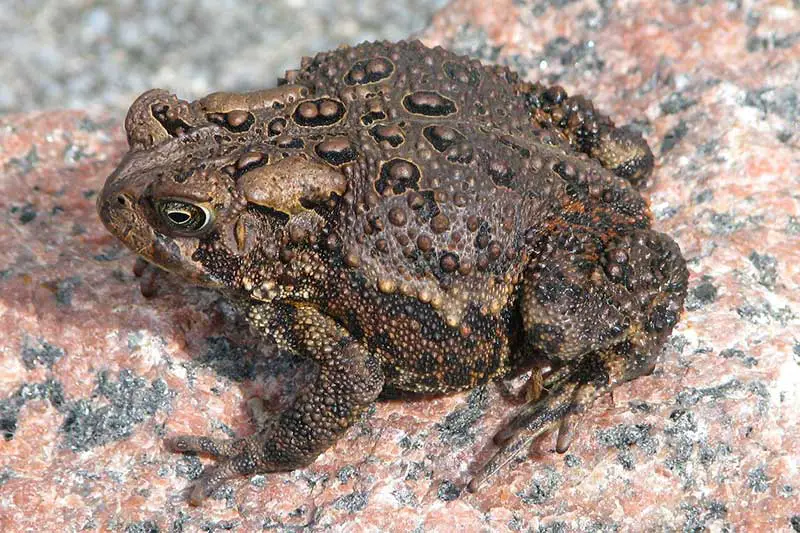
Scientific name: Anaxyrus americanus
You can find the American toad in the top-most north-eastern corner of Texas. They are plain brown with light-colored patches. Adults can grow up to 3.5 inches in length. These toads are nocturnal and active during warm and humid weather. In the winter, they burrow into the ground below the frost line.
6. Green Toad
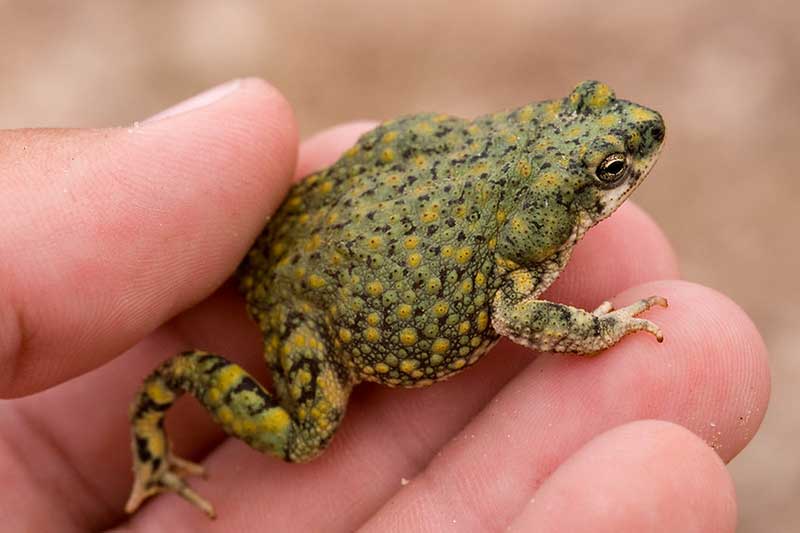
Scientific name: Bufo debilis
Green toads are bright to pale green with black spots. They are small toads with males growing to about 1.5 to 1.8 inches in length and females 1.7 to 2.1 inches. They live in the western two-thirds of Texas and enjoy living underground. These toads will emerge only to breed in ponds after heavy rain.
7. Gulf Coast Toad
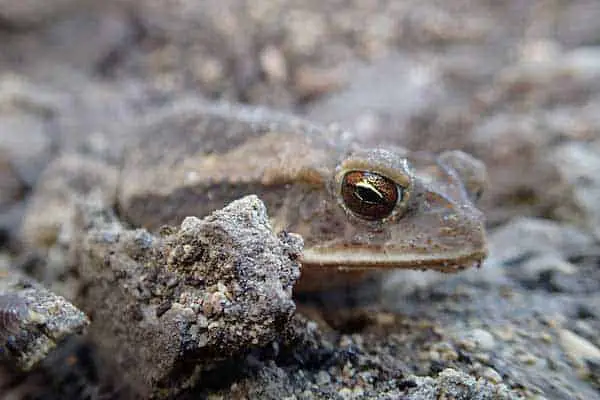
Scientific name: Bufo valliceps
The Gulf Coast toad is brown with three white stripes. These toads are bigger than most, reaching up to 4 inches. You can find them in central and south Texas as well as the southern parts of east Texas. They can live in the coastal brackish marshes and are considered salt tolerant.
8. Great Plains Toad

Scientific name: Anaxyrus cognatus
The Great Plains toad lives in the western half of Texas, including the panhandle. They can easily burrow in loose soil and enjoy open grasslands or ditches. These toads are brown, grey, and green in color with darker botches. They have numerous warts and prominent ridges on their head. Females grow larger than males at up to 4 inches in length.
9. Cane Toad
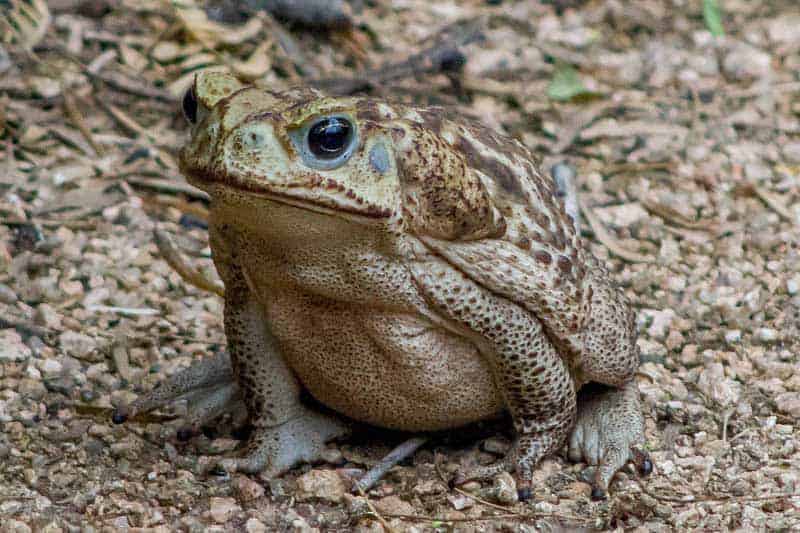
Scientific name: Bufo marina
The Cane toad is also called the Marine toad or Giant toad. They are the largest true toad in the U.S. and can grow up to 9.4 inches. These toads also have large parotoid glands behind their ears and at the back of their heads. Their color is usually yellowish, red-brown, grey, or olive-brown with different patterns. They live in the southern counties of Texas along the Rio Grande river valley.
10. Red-Spotted Toad
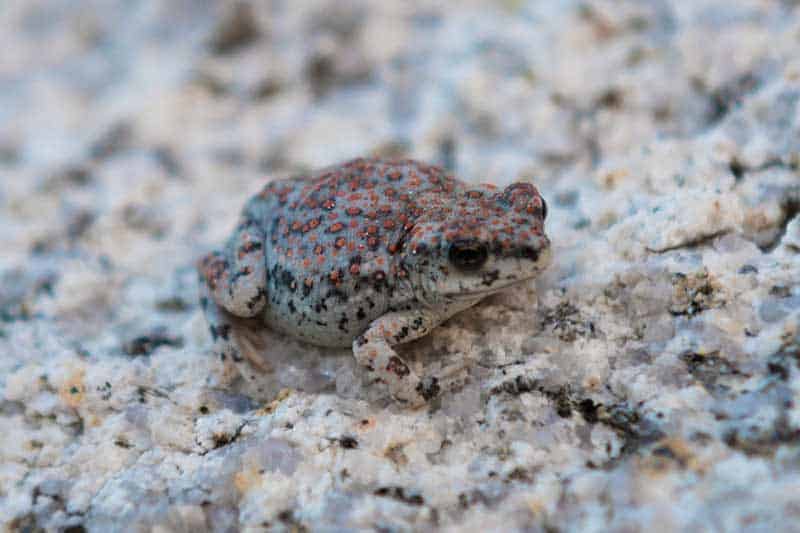
Scientific name: Anaxyrus punctatus
The Red-Spotted toad has a flat head and body that’s light gray, reddish-brown, or olive. It has distinctive red or orange warts throughout its body. You can find this toad in the western two-thirds of Texas burrowing under rocks or living in rocky canyons and streams.
11. Eastern Narrow-Mouthed toad
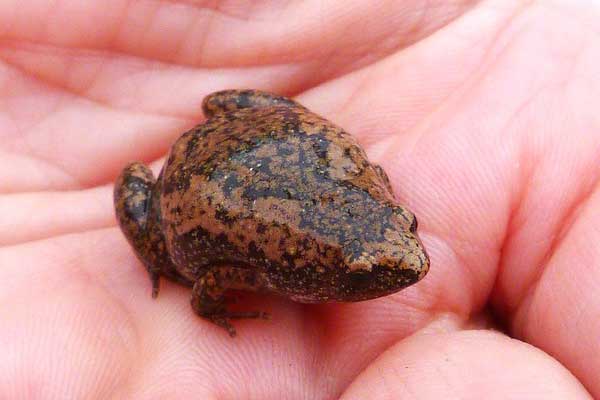
Scientific name: Gastrophryne carolinensis
The Eastern Narrow-Mouthed toad has round, oval-shaped bodies with narrow and pointed heads. Their back and legs are bluish with coppery irregular patterns, and their stomachs are multicolored. The Eastern Narrowmouth toad is quite small, growing up to 2.1 inches in length. They live in the eastern third of Texas.
12. Mexican Burrowing Toad
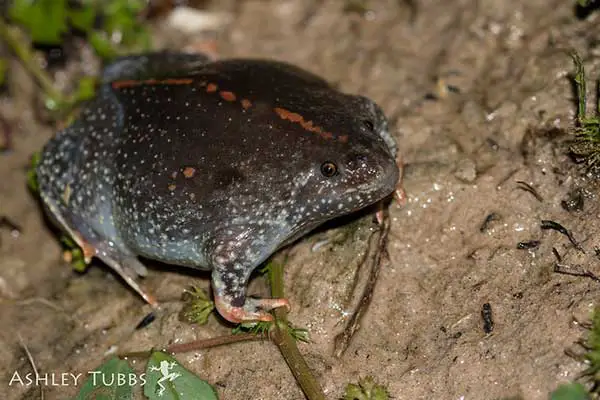
Scientific name: Rhinophrynus dorsalis
The Mexican Burrowing toad has smooth skin ranging from dark-gray to maroon-brown colors. They have orange, red, or pale yellow spots and a red stripe running down the center of their backs. Adults usually grow to around 3 or 3.3 inches.
They are commonly found in south Texas, bordering Mexico. Females generally lay between 6 to 12 eggs that hatch within a few days.
13. Great Plains Narrow-Mouthed Toad
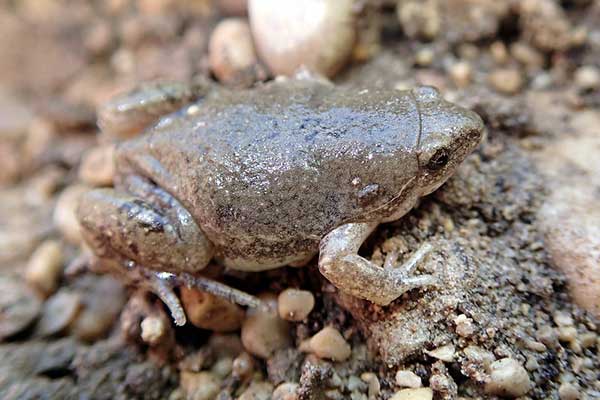
Scientific name: Gastrophryne olivacea
The Great Plains Narrow-Mouthed Toad is also known as the Western Narrow-Mouthed toad. They are small toads of around 1.5 inches in length. Their coloring is generally gray-brown or olive green with lighter bellies. Sometimes their backs have black blotching. Their call is a high-pitched peeling similar to the buzz of a bee. They live throughout most of Texas.
14. Couch’s Spadefoot Toad

Scientific name: Scaphiopus couchii
The Couch Spadefoot toad has smooth skin that is yellowish, greenish, or olive colors with spots of brown or black. Spadefoot toads have vertical pupils and a sickle-shaped spade on their hind feet. They use the spades to burrow into the ground to hide from predators and prevent water loss. They live in central Texas and breed “explosively” when rainfall creates temporary pools on dry land.
15. Eastern Spadefoot Toad
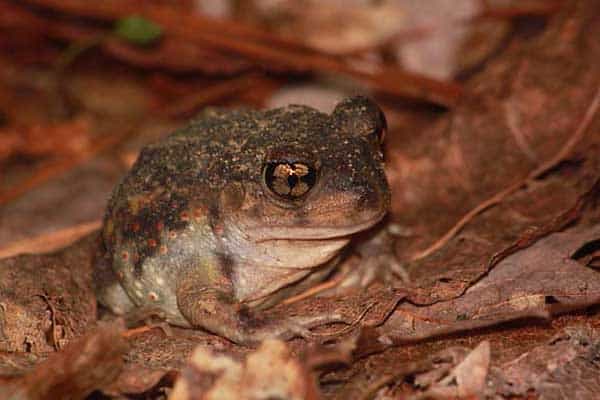
Scientific name: Scaphiopus holbrookii
The Eastern Spadefoot toad gets its name from the sharp-edged, black sickle-shaped spade on each of its hind feet and because it lives in eastern Texas. The spades allow them to burrow vertically into loose or sandy soil. Spadefoot toads are also one of the few toads without warts. Their color ranges from yellowish or tan to dark brown without bold spots. They can grow up to 3.1 inches in length.
16. New Mexico Spadefoot Toad
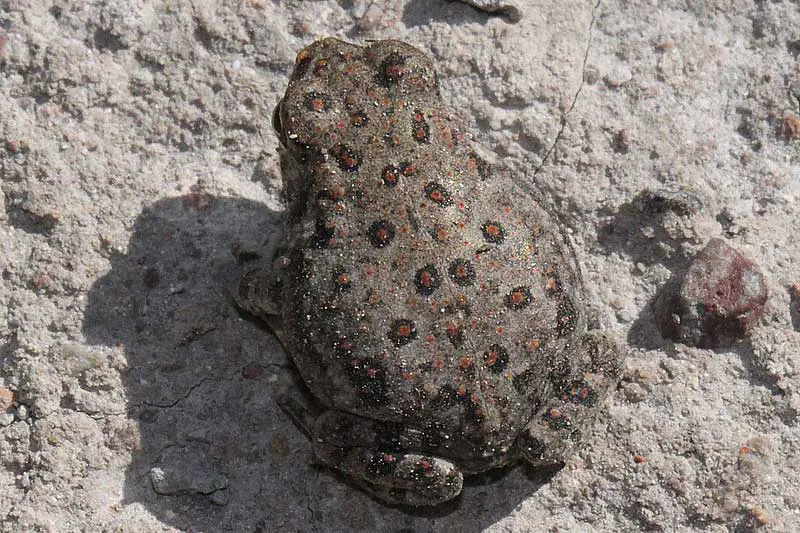
Scientific name: Spea multiplicata
The New Mexico Spadefoot toad has a round body that’s brownish, green, and grey. They also have black and orange speckling with white bellies. Like the other Spadefoots on this list, their name comes from the spades on their hind legs that allow them to burrow. These toads can grow up to 2.5 inches in length. They live in central Texas.

